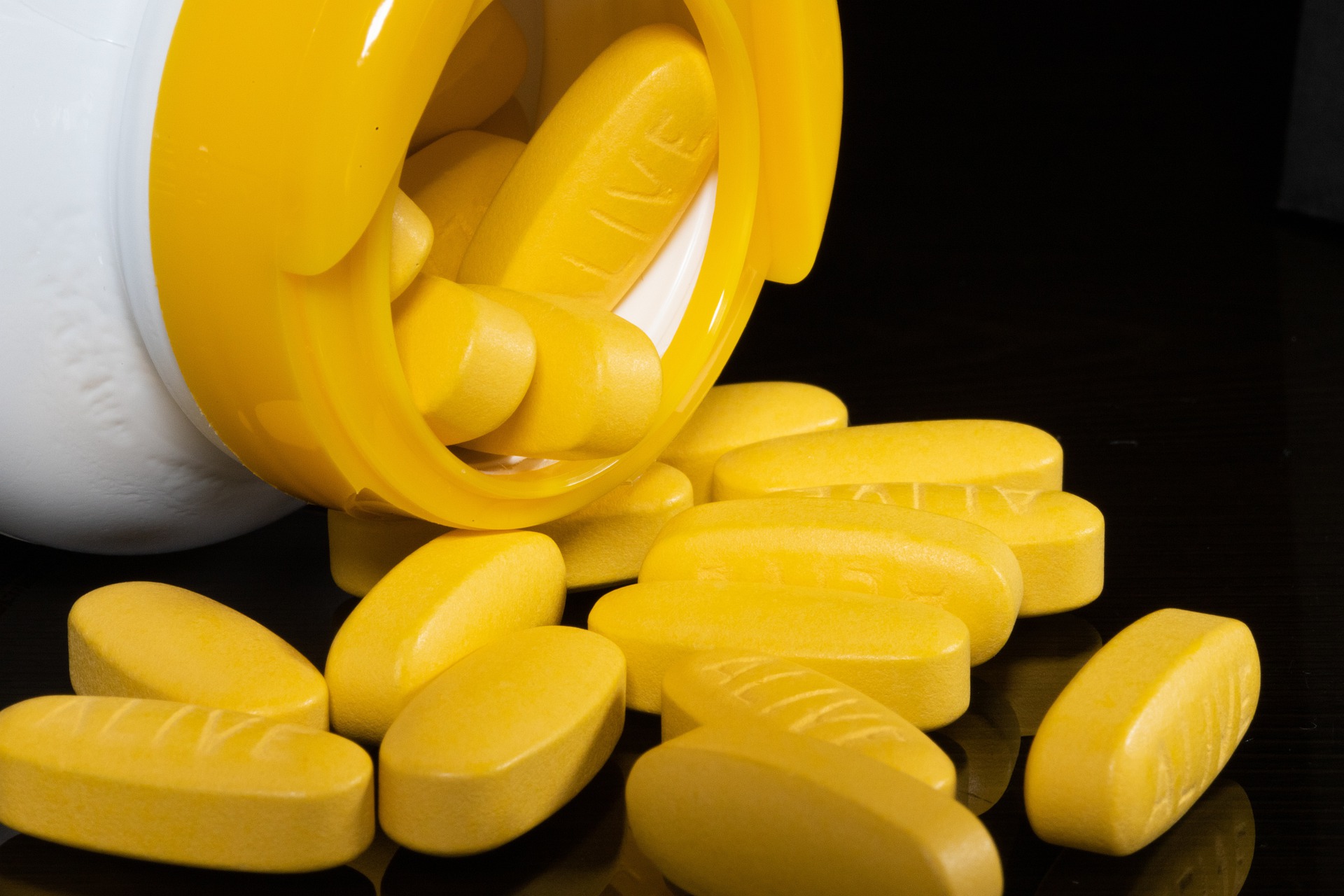heading_title

Depression is one of the most underestimated diseases. Many sufferers are constantly told that they need to pick themselves up and maybe... run? While this statement about running often comes from ignorance, there is plenty of scientific basis that shows the validity of including physical activity in the daily schedule of people with depression.
In this article, we will examine the scientific data on the effects of physical activity on depression.
- Can physical training cure depression?
- Regular activity a way to reduce the risk of depression?
- Where do these correlations come from? Learn about the mechanisms
- Psychological aspects of training
- What's the point of all this?
- Summary
Can physical training cure depression?
It's hard to talk about a complete cure, but there is plenty of data supporting the positive impact of physical activity on the risk and severity of depression. Of course, there is a possibility that exercise could pull someone out of depression if factors related to inactivity were the main substrate for its development. However, there is not always time to experiment, and when symptoms take a serious turn, it is important to seek medical advice and, if necessary, include pharmacotherapy. Physical activity can then be an excellent complement and actually increase the effectiveness of the treatment.
Exercise in depression has yet another facet. Namely, in addition to its effect on depression itself, it can reduce the risk of complications of depression or diseases that often accompany it. This is the case, for example, in relation to cardiovascular disease - people with depression have a higher risk of the disease, while incorporating exercise into their lifestyle counteracts this.
Regular activity a way to reduce the risk of depression?
Definitely. A large 2018 meta-analysis that included data from 49 studies on a total of 1,837,794 (!) people indicated that those with high levels of physical activity had about a 17% lower risk of developing depression than those with low levels of activity. The magnitude of this review is impressive, and such data are hard to argue with.
Another meta-analysis from 2019, which used CRF (cardiorespiratory fitness) as an indicator, yielded even more interesting findings. Namely, people with a low CRF, which meant a low amount of daily exercise, had as much as 64% higher risk of depression than those with a high CRF.
So it's very clear that regular sports participation clearly increases resilience to mental disorders. Later in this article we will look at the reasons for this phenomenon.
Where do these correlations come from? Learn about the mechanisms
In a nutshell:
- physical activity stimulates neuroplasticity, which affects the risk and severity of depression;
- regular activity reduces inflammation and increases resistance to oxidative and physiological stress;
- exercise (and its effects) improves self-esteem and self-efficacy over time.
Now let's look at the various aspects a little closer.
Effects of exercise on neuroplasticity and brain fitness
One of the most cited mechanisms is the effect of training on increasing the synthesis of BDNF, or brain-derived neurotrophic factor. This factor affects the regeneration of nerve cells and is linked to the so-called process of neuroplasticity. Neuroplasticity defines the ability to form new connections between neurons and remodel old ones, as well as the efficiency of this process. Interestingly, BDNF concentrations negatively correlate with both the risk of developing depression and the severity of the disease when it occurs. Some antidepressants work by raising BDNF, among other things, although this is never the main mechanism of action.
A key structure in the brain associated with neuroplasticity is the hippocampus. Depression has been linked to problems in this structure, even shrinking it. Physical training, in turn, increases the volume of the hippocampus. This and several similar observations have been described in numerous scientific publications, and it is even surprising how widespread confirmation has been given of the effects of exercise on brain morphology.
Another interesting fact is that people with higher CRF enjoy more efficient cerebral blood circulation. Such a condition means more efficient transport of oxygen, glucose, all vitamins, minerals, etc., but also neurotrophic factors and... drugs. This is another reason why pharmacotherapy should be combined with physical training.
Exercise, and hormones and metabolic health
We know that exercise is great for physical health. And it does so by normalizing a number of biochemical issues, including metabolic health, insulin sensitivity and glycemia, or hormonal management, where sex hormones have a colossal impact on well-being.
The topic of inflammation in depression is important. The disease is often associated with chronically elevated inflammatory cytokines such as IL-1, IL-6 and TNF-α. Such inflammation can affect the processes that trigger depression - it can disrupt the metabolism of the aforementioned BDNF or interfere with neurotransmitter production by affecting the kynurenine pathway. Instead, many studies confirm that exercise lowers the same cytokines that are elevated in depression.
Depression is not uncommonly accompanied by increased oxidative stress, and long-lasting excessive concentrations of free radicals (ROS and RNS) negatively affect brain function. Oxidative damage to DNA and lipids is related to depression - in it, greater oxidative stress and lower concentrations of antioxidants are observed than in healthy people. Animal studies, on the other hand, show that exercise inhibits oxidative stress in selected brain regions, including the hippocampus.
One more beneficial aspect of workouts is their normalizing effect on the functioning of the HPA (hypothalamic-pituitary-adrenal) axis. This axis regulates our stress response and cortisol production. Chronically elevated cortisol can exhibit significant neurotoxicity and contributes to the development of a huge number of disorders. Training, while it may raise cortisol temporarily (after all, intense exercise is a stressor for the body), will lead to adaptation and normalization of cortisol levels in the long run.

Psychological aspects of training
And finally, the aspect of improving self-esteem. We mainly associate regular exercise with figure improvement. Physical appearance, in turn, is a powerful factor in self-esteem. When, after 2-3 months of regular activity, you manage to see a few pounds less on the scale, or buckle your pants belt a notch tighter, or simply see a positive change in the mirror, your mood can quickly improve. Improvements in muscle strength, fitness or mobility are also very motivating. It's not just the fact of having a more attractive figure and a fitter body, but tangible confirmation that you are able to maintain discipline and achieve your goals.
Playing sports also often means easier social interactions. After all, by getting into a particular sport, we gain membership in a certain group. The ritual of greeting gym-goers upon entering the locker room or cheerfully waving to each other between runners are pleasant moments that can help a depressed person cope better.
What's the point of all this?
Just why explore these mechanisms at all, instead of just getting on a bike or grabbing a dumbbell? Well, with a theoretical background, you can optimize your training strategy in such a way as to maximize the beneficial effects of exercise on the psyche. Another thing is that by knowing the potential mechanisms, we gain more confidence in the effectiveness of our actions. Believing in what we are doing gives us more motivation and determination in our actions.
Summary
There is no doubt that physical exercise has benefits not only for the body, but also for the psyche. Physical activity minimizes the risk and severity of depression symptoms. However, this applies mainly to exercise in the full sense, i.e. a specific routine of planned workouts, regularity and actual effort (a simple walk may not be enough). Non-training activities, such as physical tasks at work, may have a slightly different effect and less effectiveness, although some biochemical effects will also be preserved.
Remember that in this context, training does not have an immediate effect. It takes time and regularity for the effects to have a chance to occur. A month is the absolute minimum, after which some effects may show.
Sources:
- Kandola A, Ashdown-Franks G, Hendrikse J, Sabiston CM, Stubbs B. Physical activity and depression: Towards understanding the antidepressant mechanisms of physical activity. Neurosci Biobehav Rev. 2019 Dec;107:525-539. doi: 10.1016/j.neubiorev.2019.09.040. epub 2019 Oct 2. PMID: 31586447.
 ⮜ Previous article
⮜ Previous article
Vitamin D3 and K2 - properties and synergy of action
 Next article ⮞
Next article ⮞